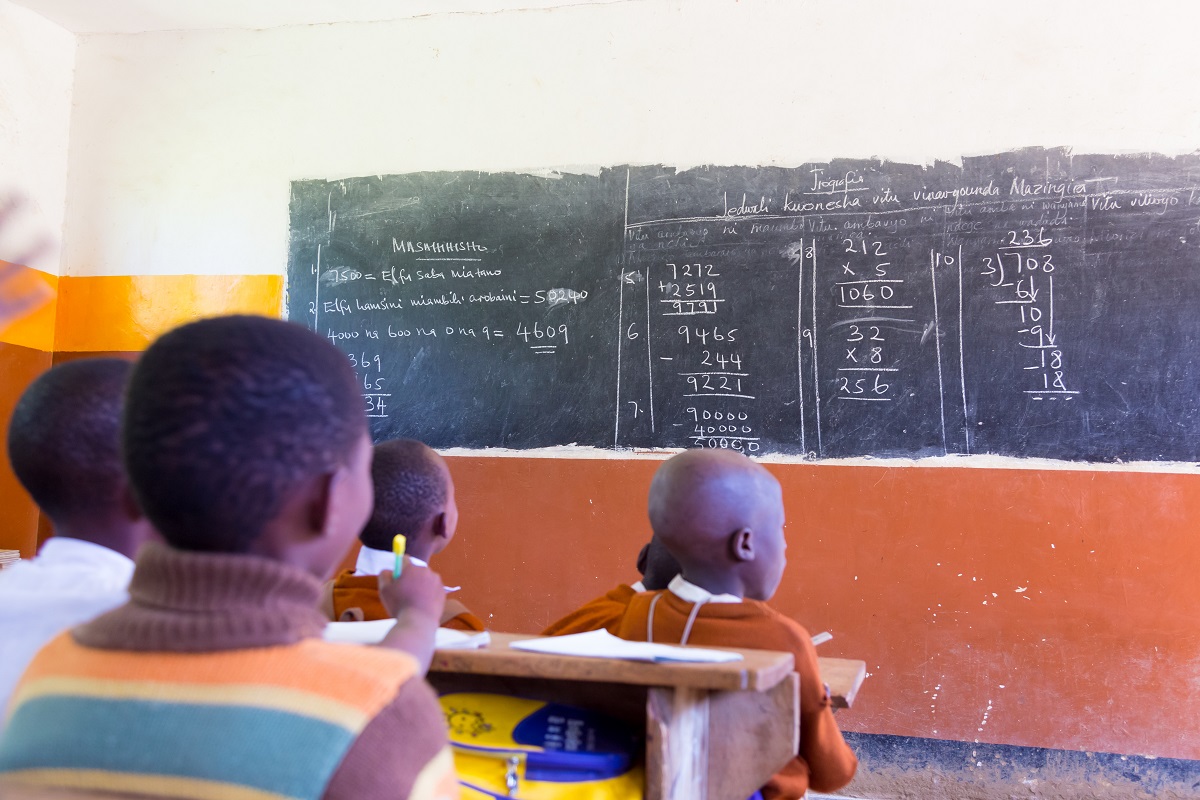Recommended
Blog Post
Women’s economic equality remains elusive in countries at every level of income. Women earn less than men. They participate in the labor force at lower rates—and when in the labor force, they have higher unemployment rates. They are overrepresented in low paying jobs and underrepresented in leadership roles. They spend more than twice as much time providing unpaid care for children and for elderly household members than men do. What will it take to close these gaps worldwide? This is the challenging question that Heymann, Sprague, and Raub tackle in their volume Equality Within Our Lifetimes: How Laws and Policies Can Close—or Widen—Gender Gaps in Economies Worldwide (available for free download). Here’s my take, published in the journal Population and Development Review today.
The book documents gender discrimination at work, sexual harassment at work, and unpaid care work in turn. The authors propose that stronger and more specific laws in each of these areas can boost women’s equality. The details of these laws matter. For example, while most countries have laws in place against gender discrimination in pay and hiring, far fewer restrict indirect discrimination (where policies appear gender neutral at first glance, but adversely affect women, as in “a minimum height test that is unnecessary to the job” within the Greek police force). Most countries around the world have some prohibition against workplace sexual harassment in place, but many of those prohibitions do not cover job seekers or apprentices. Most countries have some paid leave in place, but far fewer have paid leave for fathers—the absence of which makes women’s reentry to the workforce more challenging and reinforces gender gaps in childcare. Many countries also lack monitoring bodies to handle violations of laws and policies.
Beyond simply passing laws, the authors highlight an array of legal strategies individuals and civil society organizations have used to improve enforcement of existing laws, as well as the complementary laws that allow legal action to be effective (Who is able to sue? What kinds of penalties and rewards are available in lawsuits?). Legal aid to help vulnerable groups to access the legal system has been effective in countries at all income levels (e.g., Ecuador, Liberia, and the United States). The final chapter nicely summarizes the array of policy tools and functions as a kind of executive summary of the entire book.
The primary focus is on the role of legal support for gender equality—as the title suggests—rather than other factors, such as cultural norms or historical precedents. While laws certainly aren’t enough to eradicate gender inequality on their own, the authors provide evidence that changes in laws can significantly impact wage gaps and other important outcomes, not least because changes in laws can play a role in shifting societal norms. Most of the evidence on the causal impact of legal changes on substantive outcomes comes from high- and upper middle-income countries. Enforcement may be weaker in lower income settings. Yet even there legal changes form a crucial first step, allowing subsequent progress on enforcement. More gender progressive laws in one country can also be catalysts for legal changes in another country: pointing to paternity leave policies in other African countries—like Cameroon, Kenya, and Morocco—was a useful tool in agitating for policy changes in South Africa.
All three authors are associated with the WORLD Policy Analysis Center at the University of California Los Angeles (UCLA), and the Center’s analyses of laws and policies form the backbone of the book: several chapters end with tables summarizing legal prohibitions of gender discrimination or sexual harassment, legal recourse for the same, access to paid leave, and other policies across countries at different levels of income.
The authors also explore increased access to girls’ education and reduced child marriage as levers to improve equality. They discuss both policy changes that have been an emphasis of previous reviews of what works in girls’ education (such as eliminating tuition and providing financial support) and girls’ education policies that have received less attention in recent syntheses (such as compulsory schooling laws and prohibitions against gender discrimination, sexual violence, and sexual harassment in schools). As the authors write, “just 12 percent of countries use explicit or broad language [in their laws] that ensures protection from harassment by all school staff.” These laws can provide the basis for recourse: in El Salvador, a sexual harassment law was the basis for a sentence against a teacher sending harassing WhatsApp messages to an underage girl student. In Hong Kong, a law against sex discrimination in education helped to stop a school director from grading boys on a different, easier scale than girls. The link between girls’ education and subsequent economic outcomes for women is not always straightforward. However, education is likely a necessary condition for success in the workforce (albeit insufficient in that labor markets may still have obstacles to women that education alone cannot overcome), and education for girls confers many benefits beyond the economic realm. The authors also explore the complex interplay between increasing girls’ education and reducing child marriage, with advances in each benefitting the other.
One of the many strengths of this valuable volume is the breadth of its country coverage. Data are much more available in high-income countries than in low-income countries, yet the authors document both challenges and solutions in countries at every level of income. Thirty-eight percent of countries worldwide are either low- or lower middle-income, and roughly that proportion (42 percent) of countries mentioned in the book fall into those two categories. Along with discussions of laws and lawsuits in high-income countries like Sweden and the United States, the authors document restrictions on women’s work in Cameroon, childcare policy in Afghanistan, and the role of legal aid in Liberia.
While the book provides challenges and solutions throughout, it also provides rich case studies of how civil society organizations and individuals have effectively improved laws, policies, and their implementation (Chapter 9). The authors dive into detailed characterizations of the process of making changes in laws around gender inequality. For example, the account of expanding paid leave for fathers in South Africa—an important policy change for allowing mothers to return to the workforce and for establishing more equal gender norms in childcare—underlines the importance of champions and tireless follow-up with policymakers. The effort to expand employer-provided childcare in Jordan demonstrates the potential value of leveraging already existing but unimplemented provisions in the law, as well as listening to employers and proposing complementary legislation to address their concerns. In Uganda, the combination of strategic budget analysis, a media strategy, and litigation were essential in improving gender equitable access to education. Seeing the details of how these strategies played out—with many obstacles along the way—is deeply instructive for future movements.
Two areas where I would have valued further exploration are costs and priorities. Many policies—expanded legal aid, higher rates of pay while women and men are on leave, more access to education—come at significant costs, and some discussion of how countries have financed these changes would be a useful complement to the practical case studies of achieving change. Likewise, since many countries face most of the challenges highlighted in this book (discrimination, harassment, inattention to care work), a discussion of how government policymakers, civil society organizations, and individuals might think about prioritization across these needs would be useful. While a common ordering of priorities across countries is impossible, basic principles for thinking about which problems to tackle with greatest urgency would be a useful direction for future work.
One distraction is that the book occasionally draws on what I’d call “headline-seeking numbers”—large estimates of the economic impact of some aspect of gender inequality. There is always a tension between focusing on the inherent value of an objective (gender equality is good) and the instrumental value, whether economic (gender equality will generate more global income) or otherwise (gender equality will make both women and men healthier). Inherent versus instrumental arguments may motivate different stakeholders to act. But headline-seeking numbers—often focused on the economic aspect of the instrumental value—tend to be generated as part of advocacy efforts rather than analytical efforts and as such stretch the limits of plausibility. Here is one example: “Closing the gender gaps in employment could boost global GDP by a staggering $28 trillion.” This number comes from a McKinsey Institute report and builds on three principal assumptions: women join the labor force in similar numbers as men without any men exiting the labor force; women work as many hours as men without men working any fewer hours; women move to higher productivity sectors without men moving to lower productivity sectors. This is a “no tradeoffs” view of economies. Even when the assumptions behind estimates like these are less fanciful, they still tend to be so strong that the value of the estimates (beyond as an advocacy tool) is not obvious. These types of estimates appear scattered here and there throughout the book, and while they are neither generated by the authors nor are the focus of the book, they appear often enough that they distracted this reader from the grounded empirical analysis the authors otherwise employ.
This volume is an essential contribution to the analysis of women’s economic equality around the world and the steps required to move closer to that important objective. The authors provide evidence that women, men, and children are all better off in the face of greater gender equality. Where many reviews focus on evidence of the most effective programs to boost women’s opportunities, Heymann, Sprague, and Raub remind readers that laws (and the processes in place to implement and enforce those laws) around discrimination, harassment, and care form a crucial infrastructure upon which other programs and interventions can be built.
While hard copies of the book are sold by the University of California Press, an e-book is available free of charge via Luminos, the UC Press’s open access publishing arm. This will increase access for readers around the world. The WORLD Policy Analysis Center also has videos, infographics, policy briefs, and data for download.
Many thanks to Amina Mendez Acosta for analysis of country coverage and for constructive feedback on the review.
Disclaimer
CGD blog posts reflect the views of the authors, drawing on prior research and experience in their areas of expertise. CGD is a nonpartisan, independent organization and does not take institutional positions.
Image credit for social media/web: University of California Press







